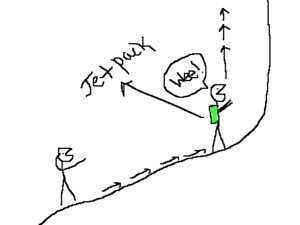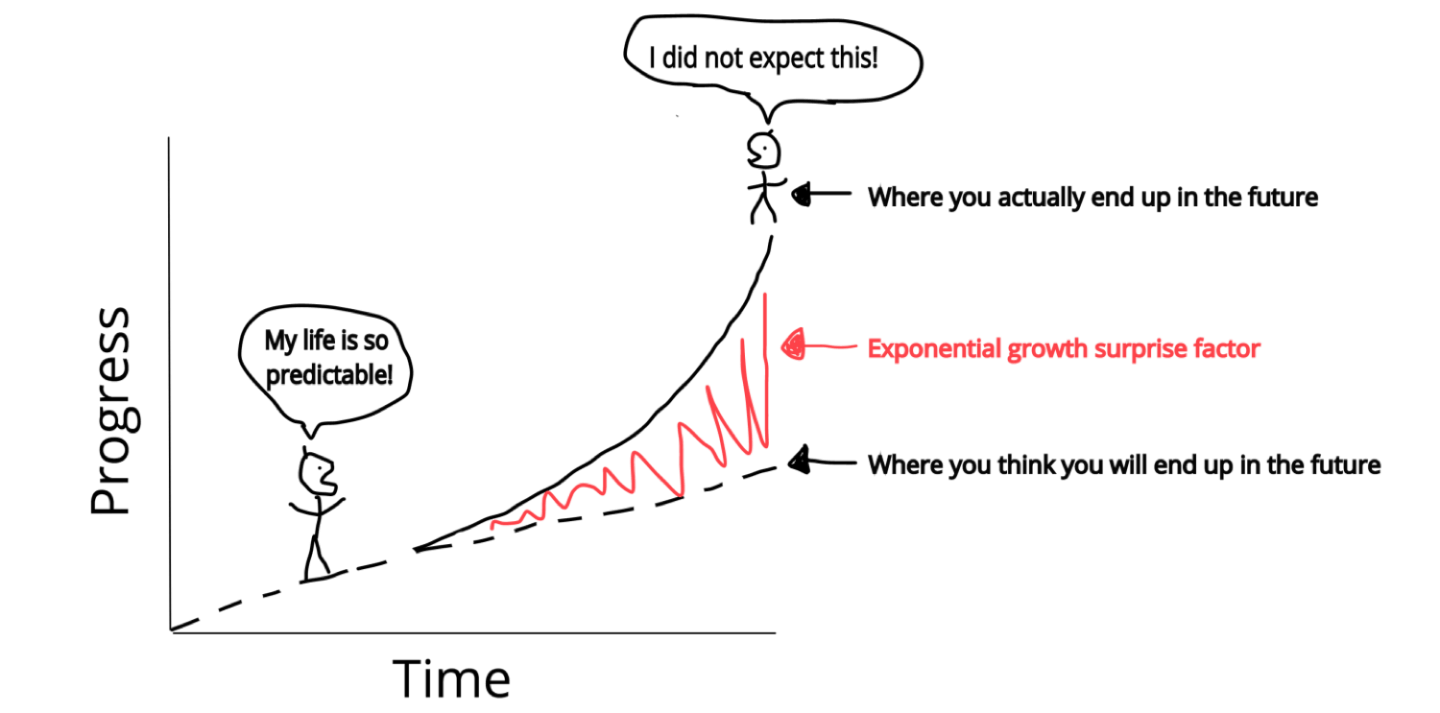Self-driving cars, virtual reality games, bioprinting human organs, human gene editing, AI personalities, 3D printing in space, three billion people connected to the Internet….
These incredible technological feats are all part of our world today. And while they are not evenly distributed, they are rapidly spreading and evolving — and in the process radically changing nearly every aspect of modern life. How we eat, work, play, communicate, and travel are deeply affected by the development of new technology.
But what is the underlying engine that drives technological progress? Does technological change progress at a steady rate? Can we predict what’s coming in 5 or 10 years?
To answer some of these questions, our team decided to dig into Ray Kurzweil’s 2005 book The Singularity Is Near, in which Kurzweil describes the exponential growth of technologies like artificial intelligence, genetics, computers, nanotechnology and robotics.
Kurzweil, while not right all the time, has one of the best track records in terms of predicting technological breakthroughs. So, he must be onto something, right?
Here are the top big insights from the book we think you should definitely know about…
Technology Feels Like It’s Accelerating — Because It Actually Is
In this piece, we explore Kurzweil’s big idea that every generation of technology stands on the shoulders of the last generation — that is, we use our best tools to build even better ones — and the rate of progress continues to speed up from version to version.
Kurzweil calls this process of technological evolution the “law of accelerating returns.”
Kurzweil outlines many examples of the law of accelerating returns in action. Here is a recent and particularly powerful one: In the last decade or so, as genome sequencing technology has gotten better and faster, the cost of sequencing a human genome has fallen from hundreds of millions of dollars to roughly $1,000.
Previously, genome sequencing technology was only accessible to governments and corporations — but it is now accessible to the average consumer.

We’ve seen this type of trend over and over — where technology gets faster, cheaper and more accessible — but nowhere is it more apparent than in Moore’s Law, which describes the decades-long exponential rise of computing. The steadiness of Moore’s Law is what made the smartphone in your pocket possible …. But is there an end in sight for Moore’s Law, and if so, will it mark the end of accelerating progress in computing (and other related tech)?
Will the End of Moore’s Law Halt Computing’s Exponential Rise?
“In brief, Moore’s Law predicts that computing chips will shrink by half in size and cost every 18 to 24 months. For the past 50 years it has been astoundingly correct.”
–Kevin Kelly, What Technology Wants
According to Kurzweil, Moore’s Law (describing the exponential growth of integrated circuits) is just one example of the law of accelerating returns, but it is perhaps the most powerful. An increasing number of related technologies across industries are driven by computing speed and power — and therefore also move at the pace of Moore’s Law.
However, after decades of going strong, it looks like Moore’s Law might be running out of steam. But does that mean it’s the end of exponential progress in computers?
Kurzweil is confident the answer is no.
There have been five distinct computing technologies already. These include electromechanical, relay, vacuum tubes, transistors, and finally, the integrated circuits described by Moore’s Law. Combined, their progress shows a smooth exponential curve—and we’re already working on the technology to take the next step.
Read on here to dig deeper into Moore’s Law and beyond.
How to Think Exponentially and Better Predict the Future
So, now we know that the law of accelerating returns is driving technological progress and that this acceleration is likely to continue — what can we do about it? Look ahead, of course.
Predicting the future is a messy business and most people get it wrong. But there seems to be an innate desire to foresee what’s coming and be better prepared for it.
How do Kurzweil’s exponential trends translate into how we choose to live our daily lives and think about the world around us?

Much of the time, we tend to think that tomorrow will be like yesterday (the linear view) and fail to account for the exponential growth factor. New technology growing exponentially tends to progress deceptively slowly at first, but then its progress shoots upward and very quickly becomes disruptive.
Read on here to learn what it means to ‘think exponentially’ and better account for the deceptive and disruptive changes we see in technological growth.
Ray Kurzweil Predicts Three Technologies Will Define Our Future
It’s clear that our brains tend to anticipate the future linearly instead of exponentially, and now we also know that the law of accelerating returns will bring more powerful technologies sooner than we imagine. So, what should we expect to see in the next couple of decades?
In this piece we explore three technological areas Kurzweil believes are poised to change our world the most this century: genetics, nanotechnology and robotics/AI.
The genetics revolution will allow us to reprogram our own biology. The nanotechnology revolution will allow us to manipulate matter at the molecular and atomic scale. The robotics revolution will allow us to create a greater than human non-biological intelligence.
There you have it: you can now confidently discuss The Singularity Is Near at your next dinner party, and you’re well on your way to predicting the future just like Ray Kurzweil.
Image credit: Rob Bulmahn/FlickrCC



